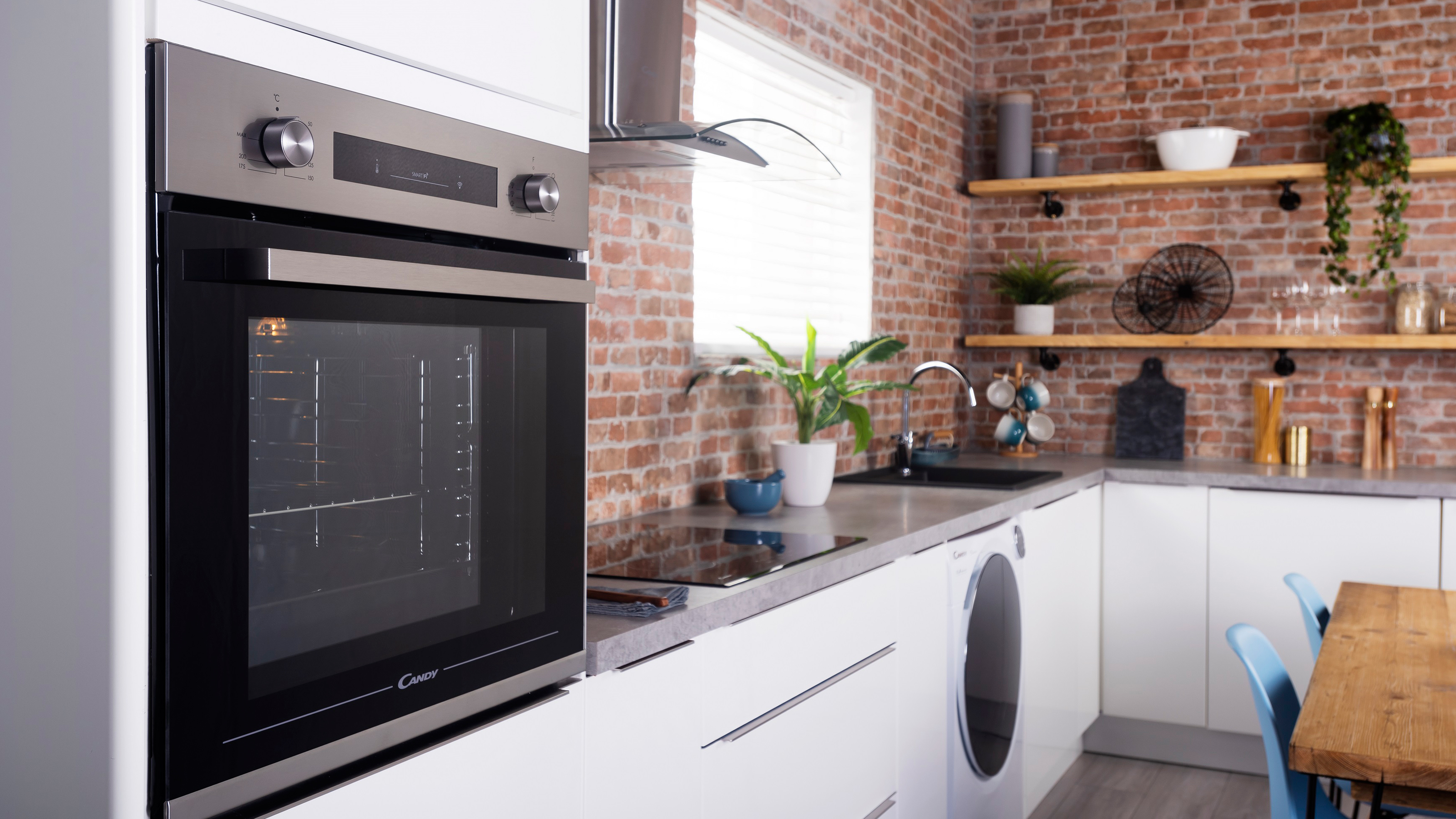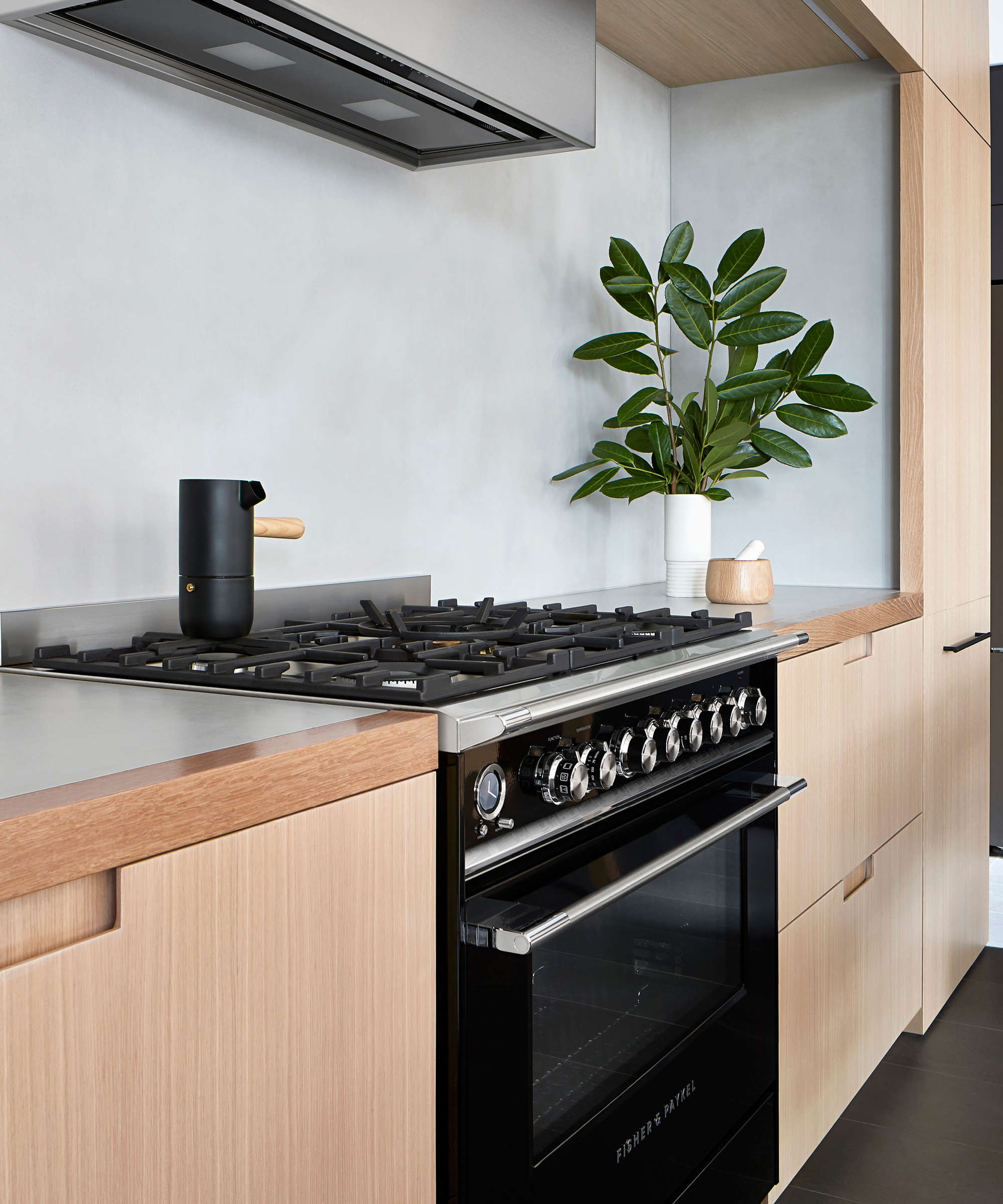What is a pyrolytic oven? And do you need one in your kitchen?
Wondering 'what is a pyrolytic oven?' The pros and cons of pyrolytic ovens explained

What is a pyrolytic oven? If you're replacing an old oven, you may have heard about pyrolytic ovens and are wondering what their benefits are. Or, if you're renovating a kitchen completely, you may be considering the latest in cutting-edge appliances as a long-term investment.
Pyrolytic ovens, or self-cleaning ovens as they're also known, can reduce or even eliminate needing to know how to clean an oven.
For many homeowners, oven cleaning is their most-hated household chore, and never needing to do it again is an attractive option. However, there are several other things to consider before buying a pyrolytic oven, according to kitchen experts.

What is a pyrolytic oven and how does it work?
Daniel P. Craig, kitchen expert with over 20 years of experience and founder of Kitchen Deets, explains that 'pyrolytic ovens clean themselves with minimal human input and save the cook from having to do it. These ovens use a process called pyrolysis to get rid of stubborn dirt. Pyrolysis involves heating it to a high temperature until it burns off.'
Essentially, a pyrolytic oven is a self-cleaning oven that burns the grease in your oven to ash under very high temperatures. Joonas Jokiniemi, an expert in outdoor and indoor cooking appliances at Grill Smoke Love, describes a pyrolytic oven as 'a type of self-cleaning oven that heats up to about 500 degrees Celsius (or about 930 degrees Fahrenheit). This is a high enough temperature to burn off any residue stuck inside the oven so that only a small amount of ashes will remain.'
Typically, during the cleaning cycle, a pyrolytic oven will lock its doors to prevent injuries. According to Joonas, 'the pyrolytic cleaning cycle usually takes between 1 to 3 hours depending on how dirty your oven is.'
What are the pros and cons of pyrolytic ovens?
The pros of pyrolytic ovens are undeniable. According to Daniel, 'a self-cleaning oven will make the chore of oven cleaning a thing of the past.' He adds that 'for those who are allergic to cleaning products and the ordeal of cleaning, a self-cleaning oven could be for you!'
Get small space home decor ideas, celeb inspiration, DIY tips and more, straight to your inbox!
All of our experts agree that pyrolytic ovens will save you a tonne of time and effort cleaning your oven; for that reason, self-cleaning ovens are among the best ovens you can get.
However, there are a couple of minor drawbacks – or shall we say, limitations – to these ovens that you need to be aware of. The main drawback of a self-cleaning oven is that it does part of the cleaning job for you, but, as Joonas points out, 'you still need to vacuum or wipe the ashes away.'
You also likely will need to do some pre-cleaning (with the best oven cleaner) if there's a lot of grease or large bits of food stuck onto the doors or inside your oven – 'if you don't remove the big food particles, they will burn during the pyrolytic cleaning and can form smoke and a bad smell.'
On balance, if you generally are a neat cook and your cooking doesn't produce too many splatters, a pyrolytic oven is a good investment. Only you know how tidy a cook you are, and if the answer is 'not that tidy', then you probably will have to do a fair bit of oven cleaning even with a self-cleaning oven, so it may not be worth your while.

How much will a pyrolytic oven cost?
Joonas tells us that 'pyrolytic ovens used to be very rare and expensive but now they are becoming more common. The typical price for a good pyrolytic oven is about $2,000 to $3,000, but some models might be available for as low as $1,000.'
It is now perfectly possible to find a self-cleaning oven to suit most budgets, so you don't have to think of a pyrolytic oven as an extravagant choice.
Can pyrolytic ovens clean oven glass?
Dennis Capone, a kitchen expert at My Kitchen Toolkit , explains that the answer to this question is 'yes and no. The high-temperature self-clean feature will absolutely remove caked-on food debris and grease from oven glass, but it won't, by any means, leave the oven door with a window-like shine.'
Dennis advises that 'in order to get your oven glass looking sparkling, you'll need to wipe it down with a mild detergent or all-purpose cleaner after you run the self-clean cycle. Luckily, this will be a super easy touch-up, much better than tackling the glass of a regular oven.'
Zac Houghton, CEO at home improvement and renovation site Loftera, adds that you should 'avoid using the pyrolytic function if any marks appear on the glass.' Any residual splatters will get caked onto the glass, which will make them even harder to remove afterward. So, the easiest thing to do may well be to just remove the inner glass before cleaning and learning how to clean a glass oven door by hand.
You also must read the instruction manual for your particular model – some actually require you to remove the inner glass prior to running the self-clean cycle.
Is a pyrolytic oven safe?
Yes. Joonas reassures anyone considering a self-cleaning oven that 'pyrolytic ovens do really work and they are safe to use. But it's important to have good ventilation while undergoing the pyrolytic cleaning cycle. This ensures that the heat and possible smoke and odors will not be stuck in your kitchen.'
You do also need to be aware that 'the exterior of the oven can get quite hot during the pyrolytic cleaning, so you should always make sure that kids and pets don't go close to the oven at this time.'
Although a self-cleaning oven goes into lock mode during a cleaning cycle, so no one will accidentally open it, it's still important to keep away from it while it's hot and to remove any kitchen towels that may be hanging on the oven door handle.
Anna is a professional writer with many years of experience. She has a passion for contemporary home decor and gardening. She covers a range of topics, from practical advice to interior and garden design.